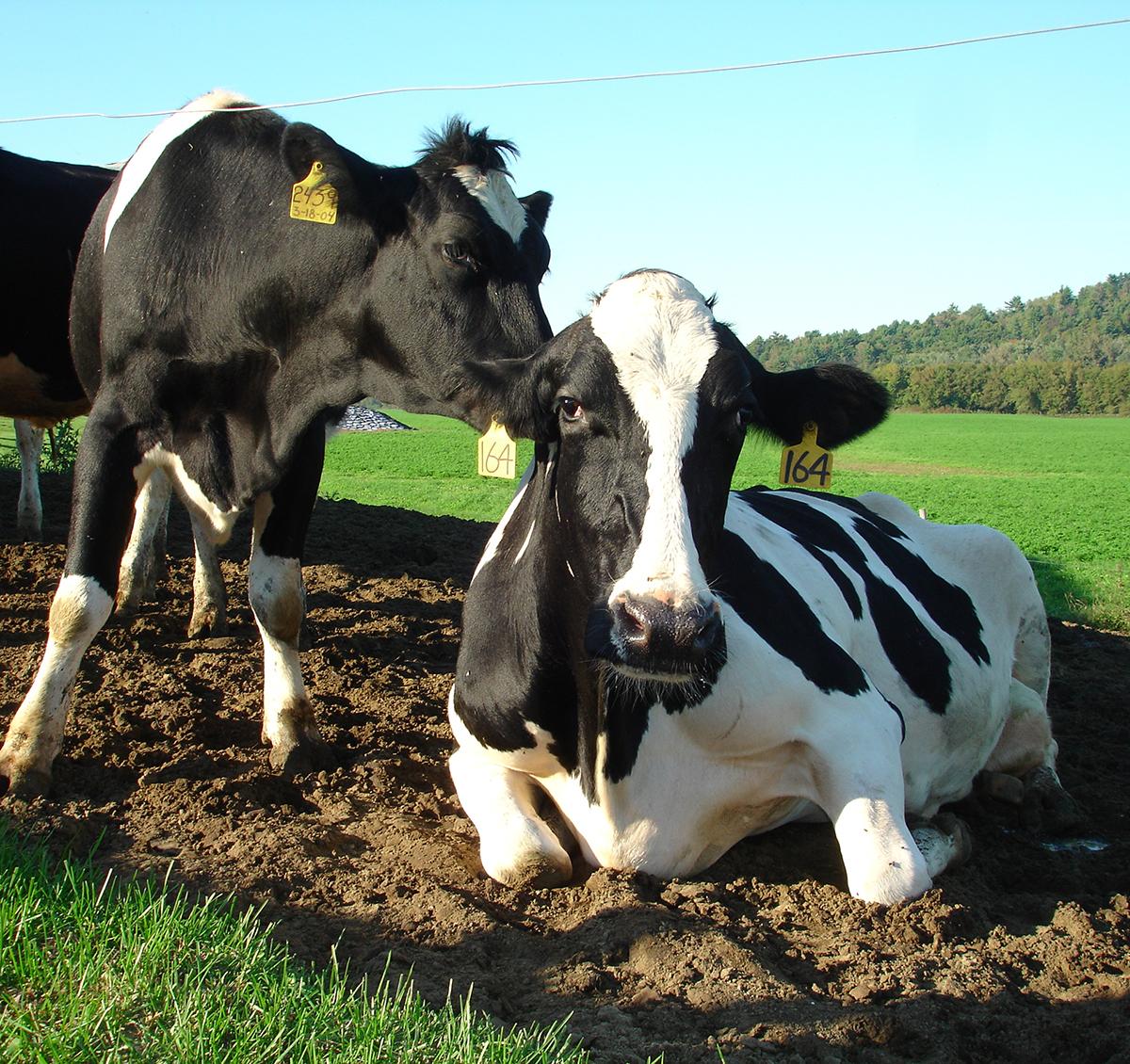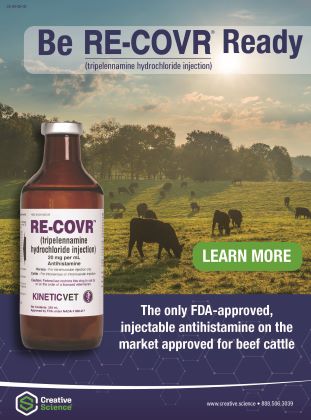Using Nutrition to Beat the Heat

Using Nutrition to Beat the Heat
By Jaclyn Krymowski
As summer temperatures rise, dairy producers know the importance of keeping their cows comfortable. While shade, ventilation, and water are crucial, there’s another powerful tool in your heat stress management arsenal: nutrition.
Like so many other changes you make to your dairy to accommodate the seasons, your ration should certainly be on the list. Not only do changing temperatures cause changes in consumption, but so does the impact of the diet on the cow’s natural thermoregulation.
Hard Hits from Heat Stress
The effects of heat stress on dairy cattle are very well documented. As more of our large dairies have moved westward and unusual weather patterns dominate the globe, there’s a greater urgency to keep cows cooler.
One of the biggest issues with heat are its economic and efficiency impacts. For youngstock and at-risk adults, it can also be deadly. When cows experience heat stress, their bodies struggle to maintain a healthy balance of water and electrolytes inside and outside their cells. This imbalance can lead to serious problems like cell shrinkage, dehydration, muscle cramps, and even heatstroke.
Even under normal conditions, cows lose essential electrolytes, minerals, and fluids through sweat and respiration. However, during heat stress, these losses become significantly greater. This combined effect of reduced intake and increased loss of bodily fluids creates a situation where cows need more resources than they can naturally replenish.
As a result, their ability to adapt to the hot environment (their comfort zone) becomes compromised during heat stress.
While it might seem counterintuitive, cows with highly efficient rumens, those that ferment their food exceptionally well, can be more susceptible to heat stress. This is because the process of rumination generates heat as a byproduct. So, cows that are already producing more heat through efficient digestion are more likely to overheat in hot weather.
Helpful Additives
The industry has responded to these concerns by looking to nutritionists for a solution. Certain feed additives can support the cow on a metabolic level and allow her to tolerate and dissipate heat more effectively.
Looking for additives that contain some of the below can help keep the herd healthy and cool during the warm parts of the year.
Electrolytes: These include minerals commonly lost through sweat like sodium, calcium and potassium. Replenishing these nutrients help cows better absorb and retain water on a cellular level across various tissues preventing dehydration.
Osmolytes: These are molecular organic compounds that help regulate fluid balance by attracting water to keep up cellular hydration.
In-direct Vasodilators: These are compounds that help dilate blood vessels increasing blood flow. Some B vitamins, like niacin, are vasodilators that help heat dissipation.
Kelp: A special seaweed-based ingredient developed by Trouw Nutrition, Tasco® has been shown to lower core body temperatures and boost performance.
Microbials: Offering fed microbials in the diet can help increase nutrient absorption, which can be impacted during times of heat. This supports vital digestive enzymes. Other forms of gut and immune support should be considered.
Other Ration Changes
Depending on your herd, region and heat abatement strategies, it can be advantageous to consider overall changes in your ration and feeding strategy to support heat tolerance. For example, keeping up sufficient is essential to provide the necessary buffers and efficient digestion.
“Heat stress increases the rate of respiration and panting, decreases rumination time, and results in a decrease in the amount of saliva and bicarbonate in the blood,” writes University of Kentucky extension educator Donna M. Amaral-Phillips in her bulletin Dairy Feeding and Management Considerations during Heat Stress. “These changes result in a decreased buffering of the rumen contents and blood. Thus, decreasing the fiber content and increasing the amount of starch in a diet is the last change you want to make in an attempt to increase the energy of the diet because ruminal acidosis could result.”
While maintaining sufficient fiber is crucial, feeding excessive amounts of neutral detergent fiber (NDF) during heat stress can be counterproductive. High NDF forages are typically lower in quality and generate more heat during rumen fermentation, requiring cows to expend even more energy to dissipate that heat compared to consuming diets with adequate, but not excessive, fiber levels.
Likewise, maintaining fat (especially bypass fats that don’t increase fermentation) and protein in the diet are also helpful at keeping heat loads at optimal levels.
Another possible dietary addition noted by Amaral-Phillips are yeast cultures. While some studies observed improved fiber digestion, a stabilized rumen environment, and even lower body temperatures and respiration rates, these findings weren’t consistent across all research. Milk production increases were also reported in some studies, with an average gain of 2.2 pounds per day across 14 trials. However, recent research suggests no improvement in milk yield, although one study did find better feed efficiency. Early lactation cows on high-concentrate diets might benefit the most from yeast compared to mid- or late-lactation animals.
There is research to suggest that increasing the feeding frequency in hot weather helps equalize absorption of nutrients to spread the heat generated via digestion over time.
Feeding earlier and later in the day can also benefit the animals as they will prefer eating in the cooler parts of the day. Water should be easily accessible and keeping the waterers clean can also help incourage animals to drink.
Making it all work
As summer temperatures soar, dairy producers must prioritize cow comfort to maintain productivity and animal well-being. While shade, ventilation, and water are essential, strategic nutrition can be a powerful tool in your heat stress management arsenal. Heat stress disrupts a cow’s natural ability to regulate its body temperature, leading to reduced feed intake and increased water loss. Fortunately, targeted dietary adjustments can help cows combat these challenges.
Consider incorporating electrolytes, osmolytes, and vasodilators to replenish essential nutrients and promote efficient heat dissipation. Special feed additives like kelp and specific microbial strains can further support digestive health and nutrient absorption during times of heat stress. While maintaining adequate fiber is crucial, avoid overdoing it, as high-fiber forages can generate additional heat during digestion.
Similarly, maintaining appropriate fat and protein levels helps cows stay cool. Feeding more frequently throughout the day can also be beneficial, allowing animals to spread out heat generation from digestion. Remember, feeding times can be adjusted to cooler parts of the day, and clean, accessible water and environmental heat abatement is always a must. By implementing these strategic nutritional adjustments alongside traditional heat abatement measures, dairy producers can empower their cows to thrive even during the hottest months.




